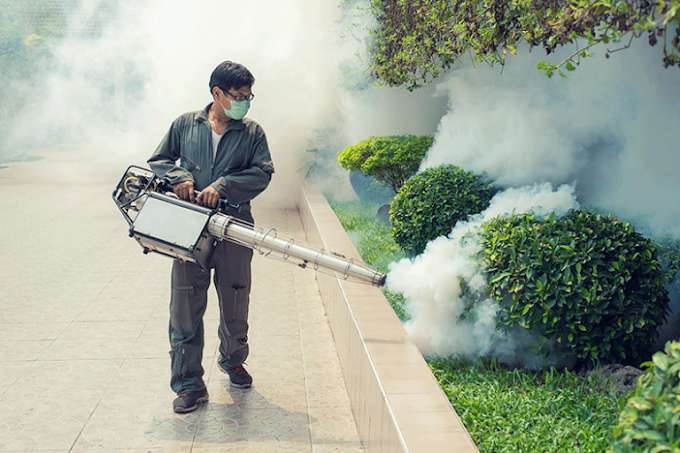Climate Change and Pest Populations
Climate change impacts the natural world in a variety of ways. The lesser known effect of climate change is its impact on pest populations. Changes in temperature, rainfall patterns and seasonal cycles have a profound impact on pest behavior and distribution.
Changes in temperature and pest proliferation
The temperature is an important factor in determining the life cycle of pests and their activity. As temperatures increase, pests experience longer breeding seasons and higher survival rates. Warmer temperatures, for example, can speed up the development of insects and lead to more generations each year. It can lead to larger populations and worse infestations.
Vector-Borne Diseases and Mosquitoes: The mosquitoes that transmit diseases highly sensitive to temperature fluctuations. The warmer temperatures allow these pests to spread geographically, allowing them thrive in areas that were previously too cold. The risk of new disease outbreaks increases, which poses a serious public health concern.
Terms: The temperature has a direct impact on termites. Temperature increases can increase termite activity, causing more damage to buildings and homes. Termites may migrate from areas that were previously free of termites to more warm-climated regions, posing a new threat.
1. Changes in Precipitation Patterns, Pest Habitats
Climate change causes shifts in rainfall patterns. Some areas experience more intense rain, while others face prolonged droughts. These changes may create conditions that are favorable for some pests, while others will struggle to survive.
Increased rainfall and pest breeding grounds: Heavy rain and flooding can create the ideal breeding ground for pests such as mosquitoes and fly. Stampeded water can be a breeding ground for mosquitoes. This leads to larger populations of mosquitoes and an increased risk of vector-borne disease. Increased humidity can also encourage the growth of molds and fungi that attract pests such as cockroaches, ants, and termites.
Drought Conditions and Pest Adaptation Inversely, drought conditions may force pests into new environments. Rodents, for example, may look to humans as a source of food and shelter due to the lack of resources available in their natural habitat. It can cause an increase in rodents in urban areas and suburbs, which is a challenge for pest control.
1. Changes in seasonal cycles and pest behavior
Climate change disrupts traditional seasonal cycles. This leads to earlier springs and later winters as well as unpredictable weather patterns. These shifts may have profound impacts on pest behaviour and population dynamics.
Extensive Growing Seasons: Pests have more time to multiply and increase their population when the growing season is longer. Aphids and other agricultural pests such as beetles and caterpillars may cause greater damage to crops. This can threaten food security. To protect yields, farmers may have to take additional pest control measures.
Alternate Migration Patterns: Many pests - including locusts, butterflies and other migratory insects - rely on seasonal cues to guide their movement. Climate change can cause pests to move unexpectedly in different areas. It can cause mismatches in the relationship between pests and natural predators. This leads to unchecked growth of pest populations.
1. Climate Change and Invasive Species
Climate change can encourage the spread of invasive pests, which are species that outcompete native species. They disrupt ecosystems. Climate change can encourage the spread of invasive plants. These pests outcompete native species and disrupt ecosystems.
Asian Tiger Mosquito Due to climate changes, the Asian Tiger Mosquito, a invasive species that transmits diseases such as dengue and Chikungunya has increased its range. This mosquito, which was originally found in Southeast Asia has spread to Europe, North America and South America. The mosquito's ability to adapt to various climates is a major public health concern.
Brown Marmorated Stinkbug: Native to East Asia, the brown marmorated stinkbug has spread throughout North America and Europe. The warmer temperatures have made it easier for the brown marmorated stink bug to spread. This has led to an increase in crop damage and economic losses. To manage and reduce the impact of this invasive species, effective pest control strategies will be needed.
1. Pest Control Strategies: Implications
Climate change is having a major impact on pest population, which means that traditional pest control methods need to be re-evaluated. To effectively reduce the risk posed by pests, both policymakers and professionals in pest management must adapt to changing conditions.
Integrated Pest Management (IPM). IPM is a holistic management approach that uses multiple strategies. IPM emphasizes prevention, monitoring and environmentally friendly methods of control. IPM is a flexible, adaptive framework that can be used to address these challenges as climate change changes pest distribution and behavior.
Early warning Systems: The development of early warning systems using climate data will help to predict pest outbreaks, and allow for timely intervention. Monitoring temperature and precipitation can reveal potential mosquito breeding grounds, allowing targeted control measures to be taken before populations explode.
Research & Innovation: Continuation of research on the effects climate change has on pests will be essential to developing effective control strategies. It is important to study the biology of pests, their behavior and how they interact with their environment. Bio pesticides, genetic modification, and other innovations in pest control can offer new ways to manage pests as climate changes.
Education and Public Awareness: Climate change and pesticides are important issues that need to be brought to the attention of the public. It is important to inform homeowners, farmers and communities about the risks they face and what preventative measures they can implement. Education campaigns can encourage pest management and reduce pest habitats.
365 Pest Control Service
Tarneit, Melbourne


@pestcontrol365
Benefits of Regular Pest Control Maintenance
Regular pest control maintenance is a crucial part of maintaining homes and businesses, yet it is frequently overlooked. Despite this, its significance is immense, particularly in regions susceptible to pest infestations. In this article, we explore the advantages of regular pest control services and why it is vital to schedule them to ensure a healthy and safe environment.
365 Pest Control Services
Tarneit, Melbourne
Call Now- 0433949536
https://365pestcontrol.com.au/....pest-control-tarneit
#pestcontrol
#pests
#insects
#rodents
#wespbees

The Complete Guide to Melbourne Pest Control Services
In this comprehensive guide, we explore the world of bees and wasps, highlighting their vital roles in the ecosystem while addressing the challenges they pose as pests. The blog covers the reasons behind infestations, including food sources and nesting sites, and provides insights into effective pest control methods.
Read to know more: https://padlet.com/365pestcont....rolmelbourne/365-pes
The Complete Guide to Melbourne Pest Control Services
In this comprehensive guide, we explore the world of bees and wasps, highlighting their vital roles in the ecosystem while addressing the challenges they pose as pests. The blog covers the reasons behind infestations, including food sources and nesting sites, and provides insights into effective pest control methods.
Read to know more: https://padlet.com/365pestcont....rolmelbourne/365-pes
365 Pest Control Melbourne- Over 20 years of experience in Providing Professional Pest Control in Melbourne. Provides residential and commercial pest control services for termites, rats, bedbugs, cockroaches, bees & wasps, spiders, mites, millipedes, mosquitoes, earwigs, fleas, and ants.
Install Palscity app






